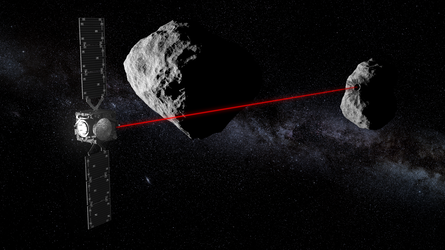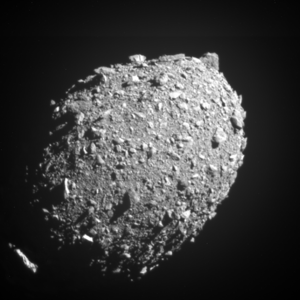Deep space CubeSats
While in the vicinity of the Didymos system, Hera will deploy ESA’s first deep-space CubeSats, in order to gather additional data on the Dimorphos asteroid, its parent and their surrounding environment while testing new intersatellite link technology for future mission architectures, based on distributed systems.
Each companion spacecraft will be small enough to fit inside a briefcase, as compared to the desk-sized Hera. CubeSats are nanosatellites based on standardised 10 cm-sized units. Hera will deliver two ‘six-unit’ CubeSat missions to the Didymos asteroid system.

The first CubeSat companion is called Milani, and was developed by a Italian/Czech/Finnish consortium.
It will perform detailed spectral measurements of both asteroids’ surfaces – measuring the sunlight they reflect and breaking down their various colours to discover how these asteroids have interacted with the space environment, pinpointing any differences in composition between the two. In addition, Milani will sample the dust surrounding these bodies, to detect volatiles such as water, characterise light organics and to monitor any molecular contamination of the CubeSat.

The other CubeSat is called Juventas, developed by Danish company GomSpace and GMV in Romania, and perform the first radar sounding of an asteroid's interior.
Juventas will peer up to 100 m deep within the 160-m-diameter Dimorphos body.
In close orbit around Dimorphos, Juventas will line up with Hera to perform satellite-to-satellite radio-science experiments and carry out a low-frequency radar survey of the asteroid interior, similar to performing a detailed ‘X-ray scan’ of Dimorphos to unveil its interior.

The adventure will end with a landing, using the dynamics of any likely bouncing to capture details of the asteroid’s surface material – followed by several days of surface operations.















 Germany
Germany
 Austria
Austria
 Belgium
Belgium
 Denmark
Denmark
 Spain
Spain
 Estonia
Estonia
 Finland
Finland
 France
France
 Greece
Greece
 Hungary
Hungary
 Ireland
Ireland
 Italy
Italy
 Luxembourg
Luxembourg
 Norway
Norway
 The Netherlands
The Netherlands
 Poland
Poland
 Portugal
Portugal
 Czechia
Czechia
 Romania
Romania
 United Kingdom
United Kingdom
 Slovenia
Slovenia
 Sweden
Sweden
 Switzerland
Switzerland











































